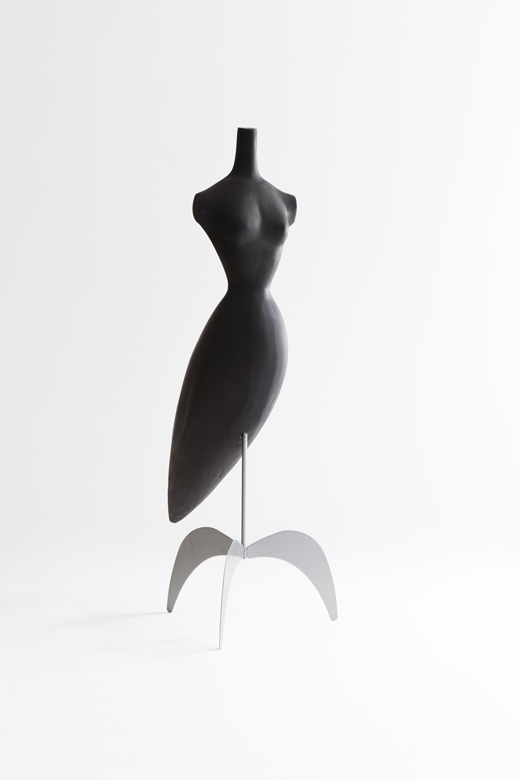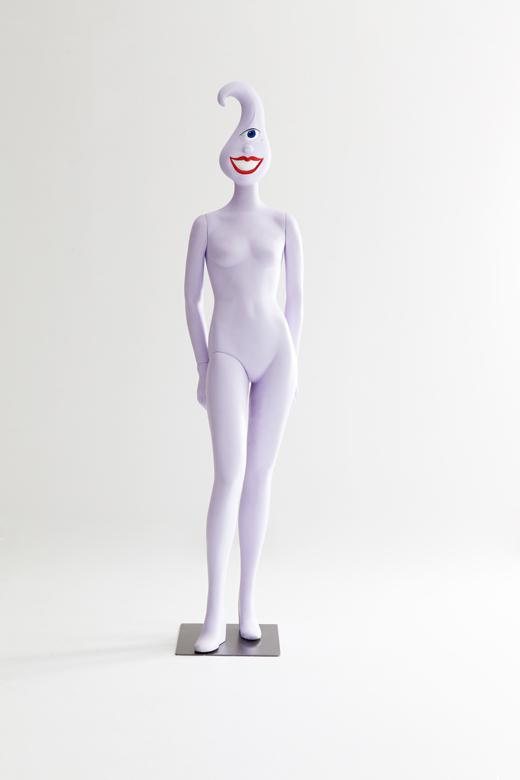Ralph Pucci: The Man Behind the Mannequin

The venerable mannequin designer tells Urban Agenda about his retrospective exhibit at the Museum of Arts and Design.
By Sarah Emily Gilbert
“A repair company in the basement of [my parent’s] home in Mount Vernon to a museum in NYC.”
This is how Ralph Pucci describes the extraordinary evolution of his family business, Pucci Mannequins. Since taking over the company in 1976, Pucci has transformed his family name into a globally renowned brand with a stronghold on the fashion industry. Armed with a visionary eye and a deep understanding of the complex history that surrounds the mannequin, Pucci has changed the way we see these bona fide clothes hangers both literally and figuratively.
Since 1870, when the first full-bodied mannequin appeared in France, these human replicas have documented the change in each generation’s take on the ideal form. According to The Mannequin Mystique by Emily and Per Ola d’Aulaire, some examples include, “the liberated, bra-less look of the ’70’s; the don’t-mess-with-me, fist-clenching feminism of the ’80’s; the somewhat softened, realistic look of the ’90’s mannequin…and the modern mannequin’s concern with health and fitness.”
While Pucci knows that mannequins are “mostly dictated by the ideal beauty of the time,” he also admits that “there is plenty of room to expand on that idea.” Pucci has not only expanded the traditional idea of the mannequin, he’s revolutionized it with his keen sense for trends and strong influences from the arts.
“To keep current, you always have to change. You have to have your eyes and ears open to what’s happening in the world. Working with artists, fashion illustrators, models, architects, gives [me] a fresh point of view. They do not know the rules, so therefore, they break the rules.”
Just who has Pucci “broken the rules” with? Some of his favorite mannequin collaborations have been with the likes of Maira Kalman, Andree Putman, Ruben Toledo, Kenny Scharf, and Christy Turlington. Ranging from god-like warriors to avant-garde shapes, his mannequins are celebrated for their visual brilliance, occasional quirkiness, and blatant unconventionality. As a result, Pucci mannequins are often regarded as art forms more than dress forms. He even uses an in-house sculptor, Michael Evert, who’s been with Pucci for the last 25 years. Though his creative process is heavily rooted in art, Pucci hasn’t forgotten about the mannequin’s traditional function as a clothing model.
“The perfect mannequin is one that wears the clothes, but also achieves a visual spirit. If it’s a fashion mannequin, it should be elegant and beautifully sculpted. If it's a contemporary mannequin, it should be modern. A sport mannequin should have power and strength.”
Pucci’s visual spirit is alive and well in his retrospective exhibit, ‘THE ART OF THE MANNEQUIN’ at the Museum of Arts and Design (MAD). From March 31 to August 30, 2015, thirty of Pucci’s most memorable mannequins are on display for museumgoers. Finding the exhibition, “extremely gratifying,” Pucci is thrilled that the visual industry is getting a shining moment in a museum whose mission is to “document contemporary and historic innovation in craft, art, and design.” As Pucci continues to turn the mannequin industry on its head, there is no doubt that the retail industry has a future rich in ingenuity.
- “MOTION 2” by Pucci Mannequins
- “Christy Turlington YOGA” by Pucci Mannequins
- “The Olympian Goddess by Andree Putnam,” Pucci Mannequins
- “Birdland by Ruben Toledo,” Pucci Mannequins
- “Swirley by Kenny Scharf,” Pucci Mannequins







